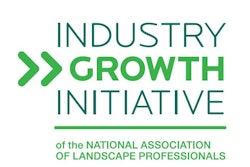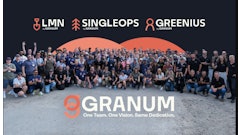
What’s trending up in web marketing and what’s trending down? Market Hardware’s team of web marketing experts put their heads together to come up with a comprehensive list of the four web trends landscaping companies need to be familiar with. Here’s what you need to know.
Trending Up: Responsive Website Design and Web Security Impacting Search Rankings
According to Pew Research Center, about 77 percent of American adults own a smartphone and roughly 50 percent own a tablet of some kind. The mobile trend shows no sign of stopping. If you’re ready to upgrade your site, then responsive website design is a must-have in order to impress anyone using their phone or tablet. Studies consistently show that, if a visitor lands on a site that is difficult to navigate, and requires zooming in and out, they simply exit and move on to a new site.
Moreover, Google firmly hitched its wagon to the mobile trend. Since April 2015, mobile-readiness has been a huge ranking factor when it comes to identifying what companies show up highest in search results. With the announcement of mobile-first indexing earlier this year, it’s now more important than ever your website is built with a responsive design.
2017 witnessed more online scams, Internet hacks and security threats than any year since the invention of the web. And the big players in the tech industry are responding accordingly by putting a greater emphasis on security. Tools like two-step password verification, CAPTCHA fields on online forms and corporate-level email solutions are becoming more commonplace as the scramble for increased security continues.
Perhaps one of the biggest surprises, however, is the growth of SSL certificates. These certificates provide a website with an added measure of security typically reserved for banks and financial institutions. Google shook things up in 2017 by indicating that all websites should have an SSL certificate installed and that it’d use it as a factor in its search rankings in order to encourage a safer, more secure Internet. Expect an increasing number of websites to have these certificates installed if they don’t already and keep an eye out for additional security measures to be factored into search rankings as well.
Trending Down: Traditional Pay-per-Click and Yellow Pages/Newspaper Ad Spend
Advertising on Google and other search engines has gotten progressively more expensive over the last one to two years. Industry newcomers know this is the fastest way to get guaranteed Page One placement and they’re not holding back in doing so. New competition is popping up every day, driving up the costs of paid ads across the board. Plus, search engines are reducing the amount of ads that show up for any given search, making placement even more competitive.
Ready for the biggest curveball? Google is aggressively rolling out its local services ads program as an alternative to pay-per-click advertising. It’s going to use a pay-per-lead model so businesses can bid on potential customers’ information once they present their interest in a service. Google is requiring background checks and proof of insurance/license in order for businesses to sign up. The program is rapidly expanding to new cities and industries, so keep an eye out for these ads in your market and consider signing up if possible.
Yellow Pages and newspaper ad spend continues to shrink. Surprised? You shouldn’t be. Consumers just aren’t opening up the Yellow Pages or newspapers to find service providers as much as they were 10 years ago. They are far more likely to type a search online and scan a company’s website in order to request a service.
Businesses have been picking up on this trend for years and have predictably pulled their marketing dollars out of traditional marketing channels. While there is still a small audience that uses those channels to find local businesses, that audience is dwindling. There might be some value to investing some marketing dollars to target those smaller audiences, but we recommend you focus the majority of your budget in more modern channels.

![Doosan Bobcat Wacker Neuson Stack 2ec Js Pb V6e[1]](https://img.greenindustrypros.com/mindful/acbm/workspaces/default/uploads/2025/12/doosan-bobcat-wacker-neuson-stack2ecjspbv6e1.CPyyz8ubHn.png?auto=format%2Ccompress&bg=fff&fill-color=fff&fit=fill&h=100&q=70&w=100)








![Doosan Bobcat Wacker Neuson Stack 2ec Js Pb V6e[1]](https://img.greenindustrypros.com/mindful/acbm/workspaces/default/uploads/2025/12/doosan-bobcat-wacker-neuson-stack2ecjspbv6e1.CPyyz8ubHn.png?ar=16%3A9&auto=format%2Ccompress&bg=fff&fill-color=fff&fit=fill&h=135&q=70&w=240)








